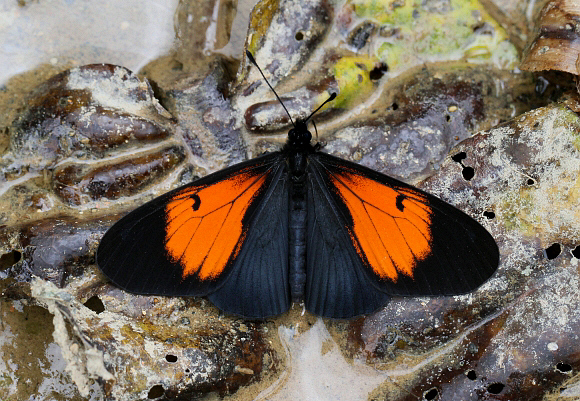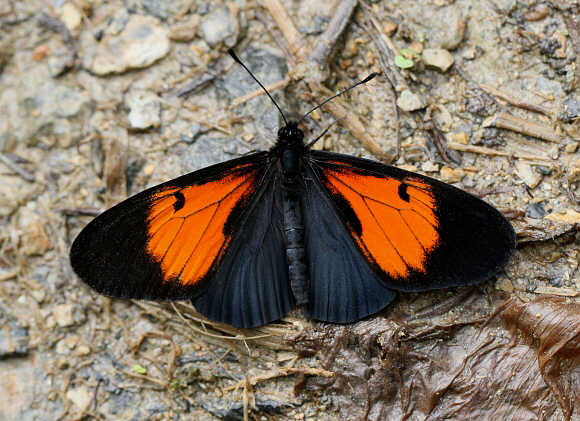
Introduction
The tribe Acraeini is primarily African – there are for example 83 species in Kenya, and about 230 in the whole African continent. There are also a few species in Asia, and an estimated 55 in the whole of the neotropical region.
In the neotropics the tribe is represented by 3 genera, most members of which have a pattern of red or orange-yellow bands on the forewings. The genus Actinote comprises of thinly scaled species whose wings have a translucent and shiny appearance. The other 2 genera Abananote and Altinote, are heavily scaled and boldly marked.
Altinote have velvety black wings, banded with bright red, orange or yellow. They are toxic models which form part of a complex Batesian / Mullerian mimicry ring involving Heliconius, Gnathotriche, Eresia, Castalia and various Ithomiine genera. Altinote characteristics which in combination make it possible to distinguish them from other genera include short straight antennae with flattened clubs, and closed cells on the hindwings. The latter can most easily be seen from the underside.
There are 17 known Altinote species, most of which are confined to the cloudforests of the Andes, although the range of 2 species extends north into Mexico.
Altinote stratonice occurs as 7 named subspecies distributed variously from Mexico to Ecuador. The species is most prolific in Colombia where 4 different subspecies occur.

Habitats
This species occurs in cloudforest habitats at altitudes between about 800-2200m.
Lifecycle
I have no information specific to stratonice, but the following generalisations are applicable to the genus Altinote: The eggs are yellowish and barrel-shaped. They are laid in batches of between 50-100 on leaves of the foodplants which according to species include Eupatorium, Vernonia, Mikania (Asteraceae), Boehmeria, and Mikania (Urticaceae).
The caterpillars are typically dull greenish or brownish in colour. They are adorned on the back and sides with rows of short branched blackish spikes which in some species have mildly urticating properties. They live gregariously until the final instar. The pupae are whitish or pale yellow, marked with black spots or lines on the wing-pads and short black spikes on the abdomen. They are suspended from stems or foliage.

Adult behaviour
Males can be found imbibing mineralised moisture from unsurfaced roads, and from river beaches. They are usually seen either singly or in low numbers amidst mixed species aggregations.

